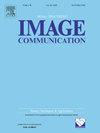活动识别使用混合模板进行动态时间规整
IF 2.7
3区 工程技术
Q2 ENGINEERING, ELECTRICAL & ELECTRONIC
引用次数: 0
摘要
序列匹配是常用的识别方法。其中,动态时间翘曲(DTW)是应用最广泛的一种。DTW通常应用于语音识别、数据挖掘、手写识别、模式查找和图像配准。近年来,它也被应用到可穿戴设备的识别中。在这里,我们的动作识别研究使用了可穿戴设备的数据集,包括加速度计和陀螺仪。DTW需要选择一个有代表性的序列作为模板,并将目标序列与模板序列进行比较。因此,模板的质量将影响识别率,如何选择模板将是一个挑战。本文提出了一种基于可穿戴设备动态时间规整的有效特征组合方法。这种组合适合于识别个体活动,即依赖于用户的活动。本文还提出了一套获取独立于用户的模板的方法。将所有学科的最佳个人模板按固定距离分组,然后将每组模板混合成一个通用模板。我们的实验都使用了公共数据集。混合模板的识别精度高于单一模板,混合模板的识别时间小于多个模板的识别时间。本文章由计算机程序翻译,如有差异,请以英文原文为准。
Activity recognition using blending template for dynamic time warping
Sequence matching is a common recognition method. In it, Dynamic Time Warping (DTW) is the most widely used one. DTW usually applies to speech recognition, data mining, handwriting recognition, patterns finding and image registration. It also has been applied to wearable device recognition in recent years. Here our action recognition research uses dataset of wearable devices that include accelerometers and gyroscopes. DTW needs to select a representative sequence as the template, and compare the target sequence with the template sequence. Therefore, the quality of the template will affect the recognition rate, and how to choose the template will be a challenge. This paper proposes an effective feature combination according to activity recognition based on dynamic time warping using wearable devices. This combination is suitable for recognizing individual, i.e., user-dependent, activities. This paper also proposes a set of procedures to get a user-independent template. Best individual templates of all subjects are grouped by fixed distance then each group is blended into a universal template. Our experiments all used public datasets. The accuracy of blending templates is higher than that of the single template, and the recognition time of blending templates is less than that of the multiple templates.
求助全文
通过发布文献求助,成功后即可免费获取论文全文。
去求助
来源期刊

Signal Processing-Image Communication
工程技术-工程:电子与电气
CiteScore
8.40
自引率
2.90%
发文量
138
审稿时长
5.2 months
期刊介绍:
Signal Processing: Image Communication is an international journal for the development of the theory and practice of image communication. Its primary objectives are the following:
To present a forum for the advancement of theory and practice of image communication.
To stimulate cross-fertilization between areas similar in nature which have traditionally been separated, for example, various aspects of visual communications and information systems.
To contribute to a rapid information exchange between the industrial and academic environments.
The editorial policy and the technical content of the journal are the responsibility of the Editor-in-Chief, the Area Editors and the Advisory Editors. The Journal is self-supporting from subscription income and contains a minimum amount of advertisements. Advertisements are subject to the prior approval of the Editor-in-Chief. The journal welcomes contributions from every country in the world.
Signal Processing: Image Communication publishes articles relating to aspects of the design, implementation and use of image communication systems. The journal features original research work, tutorial and review articles, and accounts of practical developments.
Subjects of interest include image/video coding, 3D video representations and compression, 3D graphics and animation compression, HDTV and 3DTV systems, video adaptation, video over IP, peer-to-peer video networking, interactive visual communication, multi-user video conferencing, wireless video broadcasting and communication, visual surveillance, 2D and 3D image/video quality measures, pre/post processing, video restoration and super-resolution, multi-camera video analysis, motion analysis, content-based image/video indexing and retrieval, face and gesture processing, video synthesis, 2D and 3D image/video acquisition and display technologies, architectures for image/video processing and communication.
 求助内容:
求助内容: 应助结果提醒方式:
应助结果提醒方式:


